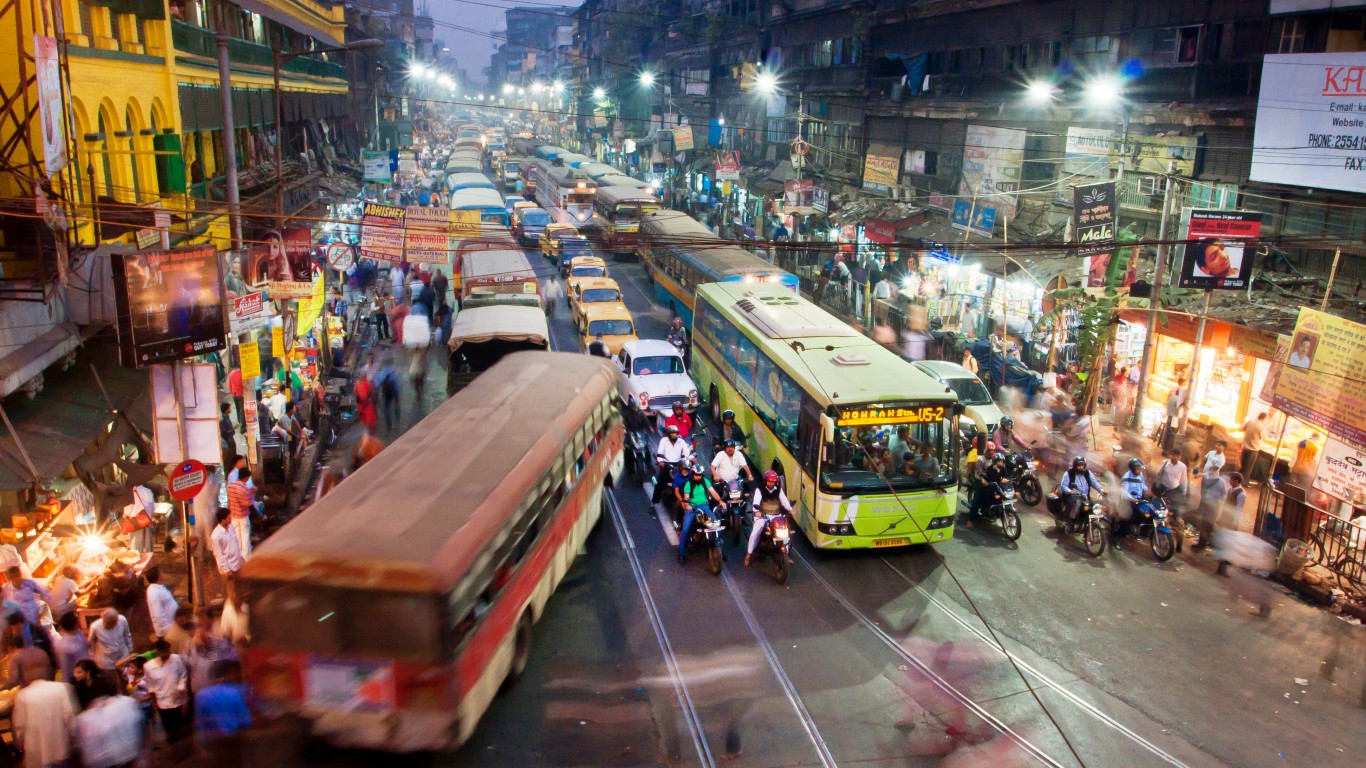
India has a wonderful future. That’s been the ploy and belief of international and emerging market investors for many years. The population is more than 1.3 billion people, and the nation’s middle class is expanding. There is a lot of hope for India’s future.
According to a fresh briefing out of Goldman Sachs, foreign investors have had an increasing appetite for Indian assets in 2019. Their basis was that Prime Minister Narendra Modi’s general election victory from May was a boon for the country, according to Goldman Sachs’ chief India economist, Prachi Mishra.
There is just one problem. All that excitement has not translated into gains for investors. To hear market pundits talk up the future of India, it might seem as though the future is bright and that there aren’t any dark clouds. Those who have invested in India over the years might have a different story to tell.
According to a Goldman Sachs podcast, asset managers are anticipating sweeping structural reforms in India in areas such as land use and labor to boost the nation’s growth. The emailed summary said that India has already attracted net capital inflows of about $13 billion so far this year, after net outflows of $11 billion in 2018, and the firm expects that trend to continue. While the Central Bank of India recently cut interest rates to stimulate the economy, the country’s longer-term growth is said to be underpinned by changing demographics.
Mishra further pointed out that the average growth in India’s gross domestic product has been about 7% per year over this past decade. Roughly three-quarters of that growth can be attributed to consumption. She noted: “India has a large and growing middle class with increasing aspirations and this middle class wants to consume and save less.”
A report from Rabobank in early 2019 forecast that economic growth would be about 7.2% in 2019. That growth was targeted around pre-election fiscal stimulus in the first half of 2019, infrastructure stimulus in the second half of 2019 and also a favorable monetary policy.
A much more recent look at the global growth story from Morgan Stanley was more subdued. With a global recession being possible in the next nine months, the report noted that India is still not close to a recession but is witnessing a crippling slowdown. The autos, industrial production and the infrastructure sectors have seen declining growth.
India’s own central bank just lowered its interest rate benchmarks more than expected (along with two other central banks in the Asia-Pacific region) and India’s Monetary Policy Committee decided to maintain its accommodative monetary policy stance with its objective of keeping inflation within a 2% up/down band of 4%.
India is one of those great story nations that has seen its economy and its population rise handily over time. That said, its future also is held back by many legacy issues around its infrastructure woes and regarding constraints of the physical layout of the country, its cities and its transportation infrastructure. Reading about India’s mountain of trash and about Patna being the most polluted city in the world will put only some of the nation’s problems in context. And one report from 2018 (citing 2016 data) shows India as the most dangerous nation for women.
In early October 2018, 24/7 Wall St. identified how and why India was continuing to disappoint foreign investors. That was even after the great promises of 2018 gave an early disappointment from its preview in late 2017.
WisdomTree India Earnings Fund (NYSEARCA: EPI) shares were down 0.5% at $23.40 on Monday, in a 52-week range of $21.66 to $27.20. Over the past five-year period, it has traded in a range of about $16.70 (in February of 2016) to a high above $29.00 (in January 2018).
The closed-end fund called The India Fund Inc. (NYSE: IFN) closed down 0.3% at $20.27 on Monday. Its 52-week range of $19.66 to $25.63 is against longer five-year ranges of about $19.75 (early 2016 and in 2019) to as high as $29.75 (2015) and $28.75 (early 2017). The Closed-End Fund Association’s website showed that it was last trading at a 10.8% discount to its net asset value, and its total asset level was $618 million as of July 31, 2019. India’s BSE Sensex 30 closed up 0.7% at $37,581.91 on Monday, up about 2.5% from the lows in May of 2019 and up about 4% from the end of 2012.
India may be a great place for international investors to look for gains in the long term. The demographics and the economics should point that way. India just has a very long history of getting in the way of its own growth opportunities.
Get Ready To Retire (Sponsored)
Start by taking a quick retirement quiz from SmartAsset that will match you with up to 3 financial advisors that serve your area and beyond in 5 minutes, or less.
Each advisor has been vetted by SmartAsset and is held to a fiduciary standard to act in your best interests.
Here’s how it works:
1. Answer SmartAsset advisor match quiz
2. Review your pre-screened matches at your leisure. Check out the advisors’ profiles.
3. Speak with advisors at no cost to you. Have an introductory call on the phone or introduction in person and choose whom to work with in the future
Thank you for reading! Have some feedback for us?
Contact the 24/7 Wall St. editorial team.

 24/7 Wall St.
24/7 Wall St.


